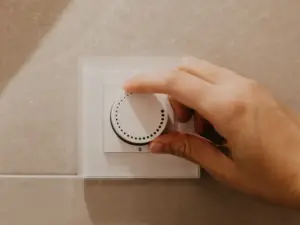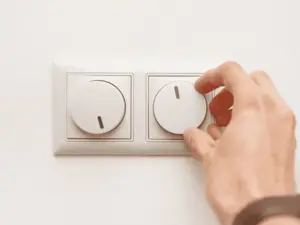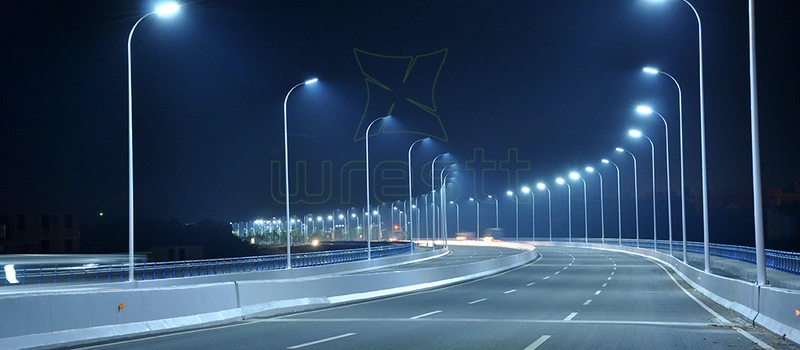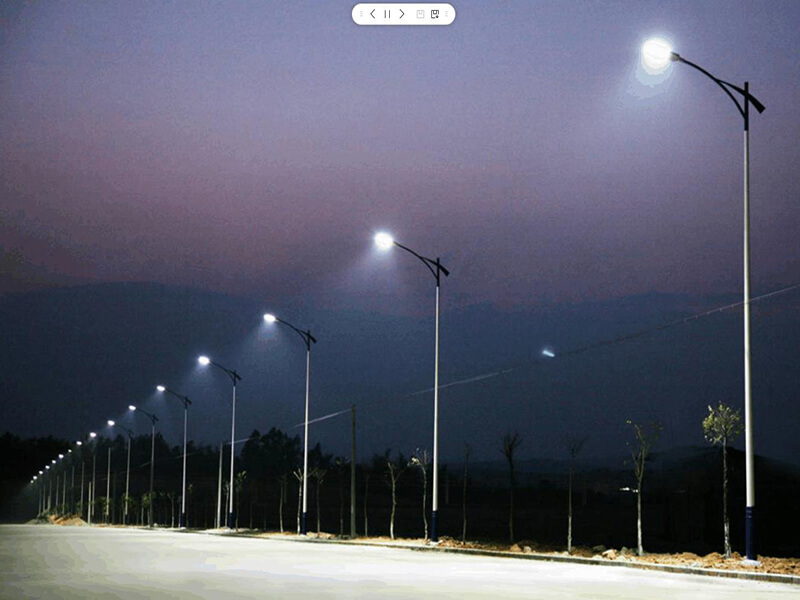Introduction:
Dimmer switches have revolutionized how we control lighting in our homes and businesses. Among the various dimmer switches available, one popular choice is the TRIAC dimmer. In this article, we’ll delve into what a TRIAC dimmer is, how it works, its pros and cons, and compare it with other dimming solutions like PWM and 0-10V dimming.
What Is A TRIAC Dimmer?
A TRIAC dimmer is a type of dimmer switch commonly used to control the brightness of incandescent, halogen, and certain LED dimmer circuits. TRIAC stands for “Triode for Alternating Current.” It is a semiconductor device that controls the current flow in a circuit. In simple terms, a TRIAC dimmer regulates the amount of power supplied to the light source, thereby adjusting its brightness.
Types of Dimmer Switches

-
Rotary TRIAC dimmer switch
Rotary dimmers are one of the most traditional types of TRIAC dimmers for lighting. They feature a knob that users rotate to adjust the brightness levels manually. Typically, these dimmers have a dial or knob that is turned clockwise. This is to increase brightness and move it counterclockwise to decrease it. Rotary dimmers offer simple operation and are commonly found in residential settings.
-
Slide TRIAC dimmer switch
Similar to rotary dimmers, slide dimmers offer manual control over brightness levels. However, instead of a knob, they feature a sliding control mechanism. Users slide the control up or down to adjust the brightness. This is with upward movement typically increasing brightness and downward movement decreasing it. Slide dimmers provide a tactile and intuitive experience. This makes them a popular choice for both residential and commercial applications.
-
Touch TRIAC dimmer switch
Touch dimmers represent a more modern and sophisticated option for controlling lighting. These dimmers feature touch-sensitive controls that respond to users’ touch gestures. By tapping or swiping on the surface of the dimmer, users can adjust brightness levels effortlessly. Touch dimmers often come with additional features such as preset lighting scenes. They also have programmable settings, allowing for enhanced customization of the lighting environment.
-
Smart TRIAC dimmer switch
Smart dimmers take lighting control to the next level. They do this by integrating with smart home systems and offering remote operation. This happens via smartphones or voice commands. These dimmers connect to home automation platforms. They are controlled through dedicated mobile apps or voice assistants like Alexa and Google Assistant. Smart dimmers offer advanced features such as scheduling and scene creation. They integrate with other smart devices. This enables users to create personalized lighting experiences tailored to their preferences.
Each type of dimmer switch has its unique features, benefits, and applications. This allows users to select the most suitable option based on their preferences.
How Does a TRIAC Dimmer Work?
TRIAC dimmers chop up the AC waveform to reduce the power delivered to the light source. Here’s a simplified breakdown of how they work:
Phase Cutting
TRIAC dimmers utilize phase-cut dimming. It delays the turn-on time of the AC voltage waveform. By controlling the point (light source), the dimmer adjusts the amount of power delivered, thus altering the brightness.
Triode Operation
The TRIAC acts as a bidirectional switch, allowing current to flow in both directions. It switches on when a small voltage is applied to its gate terminal. It remains on until the current passing through it drops below a certain threshold.
Dimming Control
The dimmer adjusts the firing angle of the TRIAC, which determines how much of the AC waveform is chopped off. A shorter firing angle delivers less power to the load, dimming the lights.
Pros and Cons of a TRIAC Dimmer

Like any technology, TRIAC dimmers come with their own set of advantages and disadvantages:
Pros:
- Compatibility: TRIAC dimmers are compatible with a wide range of lighting technologies. They include incandescent, halogen, and certain types of s.
- Smooth Dimming: They offer smooth dimming capabilities without flickering or buzzing. It provides a pleasant lighting experience.
- Cost-Effective: TRIAC dimmers are relatively affordable compared to some other dimming solutions.
Cons:
- Limited Compatibility: TRIAC dimmers work well with most traditional lighting technologies. They may not be compatible with certain types of lights, especially those with electronic drivers.
- Heat Generation: TRIAC dimmers can generate heat, particularly when dimming high-power loads. Proper ventilation and heat dissipation are essential to prevent overheating.
TRIAC VS PWM VS 0-10V dimming
Comparing TRIAC, PWM, and 0-10V dimming provides insight into the strengths. Also, their weaknesses and ideal applications of each dimming technology. Let’s explore these dimming methods in detail:
TRIAC Dimming
TRIAC dimming modulates the power delivered to the load. It happens by controlling the firing angle of a TRIAC semiconductor device. The dimmer regulates the brightness by adjusting when the TRIAC conducts current within each AC cycle. Its pros and cons are above.
PWM Dimming (Pulse Width Modulation)
PWM dimming involves rapidly switching them on and off at varying duty cycles. By adjusting the ratio of on-time to off-time (pulse width), PWM dimmers control the average power. It is delivered to the, thereby regulating its brightness.
Pros:
- Precise Control
PWM dimming offers precise control over brightness levels. It allows for fine-tuning of lighting output to meet specific requirements.
- Compatibility with Technology
PWM dimmers are compatible with many dimmable bulbs and fixtures. They are equipped with PWM dimming capabilities. This makes them suitable for modern lighting systems.
- High-Quality Dimming Performance
PWM dimming provides high-quality dimming performance. It has minimal flicker or noise. This ensures a comfortable and visually appealing lighting experience.
- Energy Efficiency
PWM dimming can improve energy efficiency by reducing power consumption. You can observe it when the lights are dimmed. It contributes to cost savings and environmental sustainability.
Cons:
- Potential Flicker at Low Dimming Levels
- PWM dimming may produce audible noise or visible flicker at lower dimming levels. It requires careful adjustment and optimization for optimal performance.
- Implementing PWM dimming may require additional circuitry and control mechanisms. It has simpler dimming methods like TRIAC dimming, increasing system complexity and cost.
0-10V Dimming
To adjust brightness levels, 0-10V dimming utilizes a control signal ranging from 0 to 10 volts. The dimmer sends a voltage signal to the driver or ballast. It happens with 0 volts, which corresponds to minimum brightness. And 10 volts corresponding to maximum brightness.
Pros:
- Versatility
0-10V dimming is compatible with a diverse array of lighting technologies. They include fluorescent and HID lighting systems, offering versatility across various applications.
- Smooth Dimming Performance
0-10V dimming delivers smooth dimming performance by adjusting the voltage signal. It enables precise control over brightness levels without perceptible flicker or noise.
- Compatibility with Lighting Control Systems
0-10V dimming is compatible with lighting control systems and protocols. It allows for seamless integration into comprehensive lighting management solutions.
- Scalability
0-10V dimming systems can be easily scaled and expanded. This is to accommodate additional lighting zones or fixtures. It provides flexibility and future-proofing capabilities.
Cons:
- Additional Control Wiring Required
- Implementing 0-10V dimming may require additional control wiring for voltage signal transmission. This potentially increases installation complexity and cost.
- Retrofitting existing lighting systems with 0-10V dimming may pose challenges. This is in terms of compatibility with legacy infrastructure and components.
Which dimming solution is best for your lights?
When selecting the optimal dimming solution, it’s essential to consider certain factors. They include compatibility with existing lighting technology and dimming performance. You should also consider requirements, system complexity, and budget constraints. TRIAC dimming offers simplicity, smooth dimming, and cost-effectiveness. PWM and 0-10V dimming provide precision, versatility, and compatibility. This is with modern lighting systems. Evaluate the unique characteristics and trade-offs. Users can effectively make informed decisions to meet their lighting control needs.
- For Incandescent and Halogen Lighting: TRIAC dimmers are an excellent choice. This is due to their compatibility and smooth dimming performance.
- For Economical Lighting: Consider PWM dimming for precise control and compatibility with fixtures. However, choose dimmable bulbs or fixtures specifically designed for PWM dimming.
- For Fluorescent or HID Lighting: 0-10V dimming offers smooth dimming performance and compatibility. These lighting technologies make it a suitable choice for commercial and industrial applications. When in doubt, consult a lighting specialist or electrician.
Conclusion:
Dimmer switches are crucial in controlling lighting systems’ ambiance and energy consumption. TRIAC dimmers remain a popular choice for many applications. However, it’s essential to consider the specific requirements. It concerns your lighting setup and exploring alternative dimming solutions like PWM and 0-10V. You can create the perfect lighting environment by selecting the right dimming technology.










